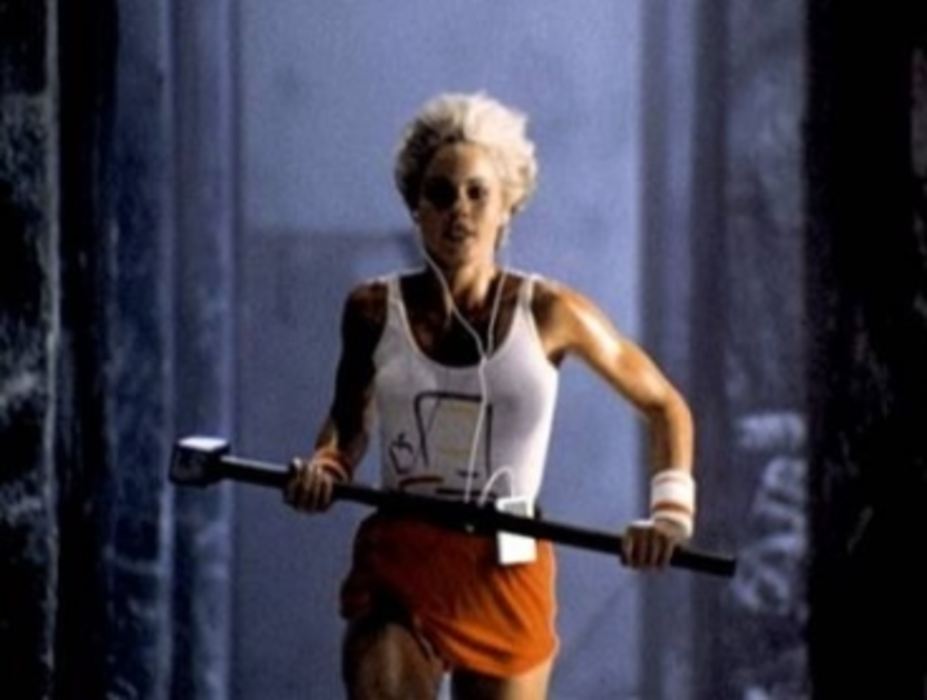“Write something that’s going to stop the world!” That was the admonition Steve Jobs gave to Chiat Day creative director Steve Hayden (the future Ogilvy vice chairman) at the conclusion of the October 1983 meeting that gave birth to the Big Brother of all Super Bowl ads.
We know that because we heard it from the mouth of a man who was in the room, then Apple CEO John Sculley, the father of the Pepsi Generation hired by Jobs to rebirth the Apple brand. Sculley recounted the moment at an event commemorating the 30th anniversary of the “1984” spot, just off “Super Bowl Boulevard” in New York.
The commercial conceived by Hayden and executed by director Ridley Scott created a stir far beyond the world of football fans who watched the 49ers defeat the Dolphins at the stadium at Stanford University (home of so many future i0S programmers; how apropos). Scott presented an Orwellian vision of colorless masses obediently huddling before an image of their Big Brother, when in sprints a blond beauty in a white-and-red track suit and hurls a Thor-like hammer at the video screen. The crawl: “On January 24th, Apple Computer will introduce McIntosh. And you’ll see why 1984 won’t be like ‘1984.’”
“It was the first viral ad,” said David Steinberg, CEO of Zeta Interactive, which sponsored the celebratory event, “except the social medium was the office water cooler.”
But Scott’s marketing masterpiece almost didn’t make it out of the Betamax in Apple’s boardroom. After securing two minutes of Super Bowl advertising time, Jobs convened the board of directors and showed them the spot, which didn’t include even a parting shot of the product. “There was dead silence,” Sculley recalled. “Then one board member turns to me and says, ‘You’re not going to run this thing, are you?’ The board discussed it and told us to sell the Super Bowl time.”
Ah, but Steve Jobs is not the hero of a generation for nothing. He and Sculley sold one minute and kept the other. The spot ran, and if it failed to stop the world, it at least paused the hoisting of millions of Bud Lites to millions of lips. Advertising, computer, and football history was made. Indeed, says noted adman Y&R CEO David Sable, it was an historical achievement rarely replicated to this day.
Sable, who was also on hand for the event, said that “1984”–as well as a subsequent Apple spot that launched the iPhone during an Academy Awards broadcast–displayed a level of customer insight and inspiration that is now sorely lacking in the rush to achieve video virality. He questions the current trend toward pre-releasing Super Bowl ads on YouTube prior to the big event. “So you get millions of views on YouTube, but by who?” Sable said. “In 1984 people saw the ad and went out and bought Macs.”
Sable maintains that today’s Super Bowl advertisers play a silly numbers game, eschewing data-informed targeting, and instead practicing what he calls GMOOT, or “give me one of those.”
“Instead of looking for customer insight, they look at what gets shared and emulate it. They’re juking the system,” Sable said. “A cat pissing on somebody’s shoes gets shared a lot, but nobody remembers it. Ninety-five percent of stuff shared on the Internet doesn’t sell anything.”








